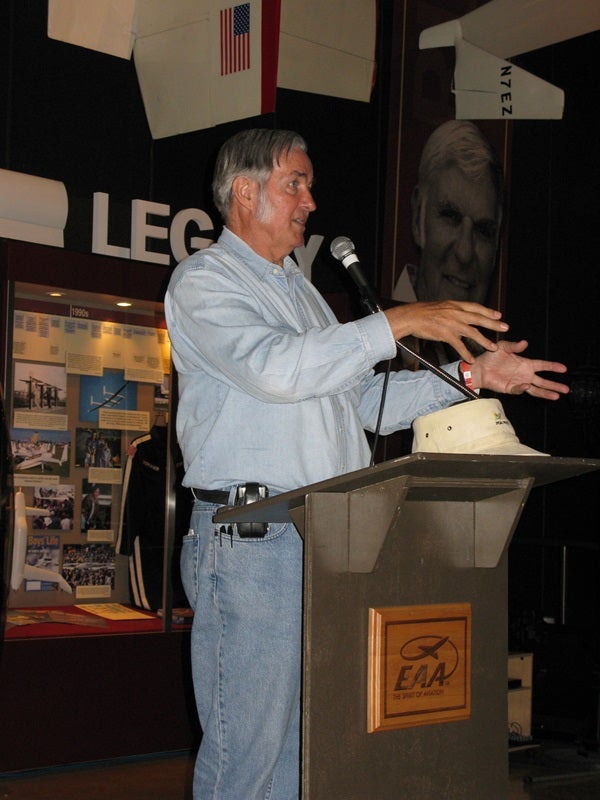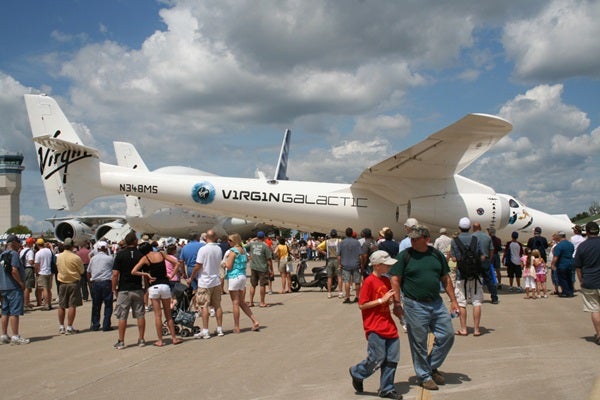If aircraft- and spaceship-designer Burt Rutan has his way, many people now alive will have the opportunity to orbit the Moon later in this century. Rutan, who spoke July 31 at the Experimental Aircraft Association’s (EAA) national convention in Oshkosh, Wisconsin, is famous for his design of SpaceShipOne, the first commercial craft to take a man into suborbital space, in 2004.
The aircraft guru says his immediate goal in designing the upcoming SpaceShipTwo system for Virgin Galactic airlines is to allow thousands of people the chance to take suborbital flights into space (above 62 miles [100 km] altitude). The flights would allow six passengers on each launch to experience weightlessness for more than 3 minutes. Rutan says Virgin Galactic will eventually have the capability to fly three to four missions each day, using multiple launchers. He already has completed a prototype mother ship for SpaceShipTwo, called WhiteKnightTwo. WhiteKnightTwo flew at the air show July 31, the same day Rutan spoke.
Rutan says that, since the Moon has no atmosphere, it will be possible to skim only hundreds of feet above the surface at some 7,000 mph (11,000 km/h) in an orbiting spacecraft with tourists aboard. He hopes his company will develop the orbital hotel and Moon shuttle within 40 years.











